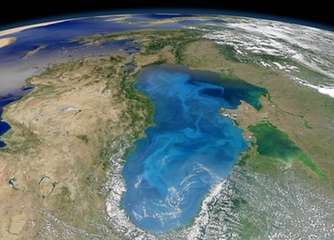Saving the blue waters pouring into the Black Sea

An early warning system of threats over freshwater resources in the Black Sea region is now available to policy makers. The onus remains on them to effectively preserve fresh water sources.
The Black Sea is known for its severe environmental degradation. Some signs of recovery have been observed in the last years, albeit on a small scale. Scientists believe that it is still possible to limit the negative environmental impact. Their solution: an early warning system designed under the umbrella of the EU funded project EnviroGRIDS. This predictive tool is designed to inform decision makers about the risks from climatic, demographic and land cover changes to human health, biodiversity and ecosystems integrity or agriculture production. This is facilitated by a grid computing infrastructure, allowing stakeholders and local authorities to access this system over the internet.
The project's tool is a spatial data computing infrastructure, which is a component of an international voluntary effort that aims at enhancing the relevance of earth observations, dubbed GEOSS. It was used to create a hydrological model covering all the rivers that flow into the Black Sea. This model is designed to allow scientists to explore the outcomes of integrated scenarios of change – including climate, land cover and demography – on the water quality and quantity of all rivers basins in a comparative way, in a 50-year horizon. These scenarios will help for instance the planning of the water resources in relation with the population size or agricultural needs.
The most challenging aspect of the project was to convince the regional data holders to make their data and metadata available to a larger audience. "If the people keep hiding behind the data, then it is really hard to help them" says Anthony Lehmann, project coordinator and head of enviroSPACE, the spatial analyses laboratory at the Institute for Environmental Science of the University of Geneva, Switzerland.
The Black Sea catchment is regarded by the scientists as an area of a constant risk of being affected by diverse factors impacting the ecosystem. Therefore, the data unification into a single public network, available for the states surrounding the Black Sea will help taking appropriate measures to mitigate the consequences of sudden disasters, according to Sofia Mazlumyan, researcher at the Institute of Biology of the Southern Seas (IBSS), in Sevastopol, Ukraine.
She recognises that the coordination of so many partners in the Black Sea region extremely complicated, considering the multiplicity of research institutes and the different languages used. Nevertheless, the predictions provided by a model using more completed data of climate change will be more accurate. However, she adds, the regional environmental balance and stability must be ensured by the right legal and administrative instruments.
This initiative is not the first of its kind, according to another expert. A similar data gathering, although with different target, was done almost 20 years ago, according to Simion Nicolaev, manager of Grigore Antipa, the National Institute for Marine Research and Development, in Constanta, Romania. "That's why such project is important. To see how things have evolved, especially those linked to the pollution sources and to the water transfer from the rivers to the sea," he tells youris.com.
Even if the situation has improved in the meantime, the Black Sea is still like a "recovering patient, vulnerable to eventual external harmful factors," Nicolaev notes. As for the future actions, he thinks that "the decision makers should find the balance between the toughness of the proposed measures and the efficiency of their implementation." He fears that policy makers may agree to some laws with very ambitious goals but, which cannot be implemented for what he describes as "subjective reasons."
It is difficult to know whether policymakers will pay more attention to this model in the future. However, there is a precedent in the Baltic Sea. There, a new policy to reduce the nutrient load in the sea was introduced almost 10 years ago, after the implementation of a similar research project. The kind of evidence provided by the Baltic Sea experience, Lehmann believes, may therefore be what the Black Sea Commission requires to set a pollution reduction target in different basins.
Provided by Youris.com


















